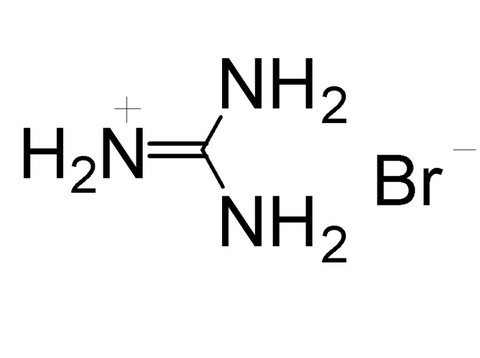
High Purity Guanidinium Bromide (GABr, CH6N3Br), 99.5%, 5g
SKU: CM0714
High Purity Guanidinium Bromide (GABr, CH6N3Br), 99.5%, 5g
Guanidinium Bromide (GABr) is a popular additive in bromide based perovskite materials (ABX3), such as MAPbBr3, to improve the stability of perovskite by tuning the morphology of the perovskite crystals. For inorganic perovskite materials, the introduction of highly symmetrical GA+ can effectively improve the charge carrier lifetimes, enhance defect tolerance and phase stability, passivate defects at the surface and grain boundary of perovskites, as well as stable the perovskite crystal structure, thus boosting the efficiency and stability. For organic-inorganic perovskite materials, the introduction of GA+ retards crystallization and enlarges grain sizes, resulting in uniform and compact perovskite films. Meanwhile, it can concurrently heal negatively and positively charged defects, further equilibrate charge of perovskites.
Technical Data:
| Product Name | Guanidinium Bromide |
| Synonym |
|
| SKU# |
CM0714 |
| CAS Number | 19244-98-5 |
| Chemical Formula | CH6N3Br |
| Molecular Weight | 139.98 g/mol |
| Purity | ≥99.5% (4 Times Purification ) |
| Melting Point | 191 °C |
| Appearance | White Powder |
| Solubility | Soluble in water, EtOH et al. |
| Packaging | 5 g, or as required in glass bottle |
| Store | 25 ℃ under N2 atmosphere |
| Notes | 1HNMR spectra, user instruction for enquiring |
References:
[2]: Guanidinium-assisted crystallization modulation and reduction of open-circuit voltage deficit for efficient planar FAPbBr3 perovskite solar cells. Chemical Engineering Journal 437 (2022): 135181.
